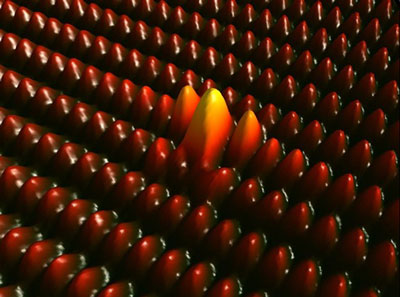| Dec 27, 2012 |
Researchers discover unexpected charge properties of single dopants
|
|
(Nanowerk News) Traditionally, phosphorus and arsenic atoms have been used as donors in silicon, donating electrons that make up the current that flows through device components. However recently there have been proposals to use the spin of electrons from donor atoms for the storage and manipulation of quantum information and for these applications the heavier donor atoms of antimony and bismuth are also desirable.
|
|
However, little is known about the atomic scale properties of these donors, especially the way in which they might behave in real devices where they would be influenced by the surfaces and interfaces presented by other device components.
|
 |
| An ndividual antimony atom in the surface of silicon.
|
|
The extent to which the local environment can affect the properties of antimony and bismuth atoms was revealed by researchers from the London Centre for Nanotechnology when they studied the behaviour of the atoms at the surface of silicon ("Site-Dependent Ambipolar Charge States Induced by Group V Atoms in a Silicon Surface").
|
|
Here they found that the precise location of the donor atom in the surface determined whether a positive or negative charge was induced in the surface, which was contrary to expectation because donors in bulk silicon are either neutral or positively charged, depending on sample temperature.
|
|
The discovery described above was achieved using scanning tunnelling microscopy, a technique capable of imaging the location and electronic character of individual atoms in a surface, and supported by sophisticated theoretical simulations. In order to produce samples with single bismuth atoms at the surface a new sample preparation process was developed, based on ion implantation, and published in a separate paper. “This research marks an important step towards the full characterisation of the atomic scale behaviour of donor atoms that will be vital for the design and fabrication of future quantum computation and spintronic devices in silicon”, says Dr Neil Curson, who led the research.
|

